AI in Google Workspace – Slides
 Google Workspace is a comprehensive and secure platform that empowers organizations to be more productive, collaborative, and creative. This series explores the power of AI built within Google Workspace across each of the workspace apps. In this post, we cover AI in Slides.
Google Workspace is a comprehensive and secure platform that empowers organizations to be more productive, collaborative, and creative. This series explores the power of AI built within Google Workspace across each of the workspace apps. In this post, we cover AI in Slides.
AI in Slides
Google Slides are a collaborative tool for communicating ideas. Gemini AI in Slides helps bring your presentations to life. Create visually stunning unique images, generate new slides, get help writing slides content and talk tracks, and catch up with quick summaries.
Here are 5 Gemini features in Slides you should know:
Generate Slides and Presentations
- Use Gemini AI to transform ideas into slides and full presentations.
- Start your presentation from scratch by giving the AI a prompt or describing your presentation in a few sentences.
- Gemini will generate an outline and a first draft of slides, complete with titles, bullet points, and even suggested layouts.
Generate Images
- Gemini AI in Slides uses advanced image generation models (like Imagen 3) to create original images directly within your presentation. Describe the image you need and the AI will generate it. Create unique visuals without searching for stock photos.
Summarize Presentations
- Get up to speed quickly with automatic presentation summaries provided by Gemini in the side panel of Slides.
Generate Speaker Notes
- AI in Slides can assist in creating speaker notes for individual slides and can provide an executive summary for your entire presentation. You get clear talking points quickly and efficiently.
Design Suggestions and Customization
- Gemini AI suggests visually appealing layouts and designs for your slides and with a consistent and professional look.
- Transform a plain block of text into a more structured format like a timeline or a diagram.
And More …
You can also use Gemini AI within Slides for …
Contextual Content Creation
- Gemini in Slides can reference your existing Google Drive files (PDFs, Docs, etc.) or even Gmail emails to help you generate new slides or extract relevant information.
Remove Image Backgrounds
- This feature allows you to easily remove the background from images you’ve added to your slides, making it simpler to integrate visuals seamlessly into your design.
Rewrite/Summarize Text
- Gemini AI helps you refine your slide content. Select text and ask the AI to rewrite it for conciseness, to expand on a point, or to change the tone.
- You can also use Gemini AI in Slides to summarize longer blocks of text into digestible bullet points for your slides.
We Will Help
At Cumulus Global, our priority is ensuring that you have productive, secure, and affordable managed cloud services. We work to ensure that you get the most value from the IT and cloud services you need and want, without overspending, to best support your business objectives.
Unsure of where to start? Check out our IT Assessment or schedule a meeting with a Cloud Advisor. We will help you adapt while keeping your IT services secure and cost-effective.
About the Author
 Allen Falcon is the co-founder and CEO of Cumulus Global. Allen co-founded Cumulus Global in 2006 to offer small businesses enterprise-grade email security and compliance using emerging cloud solutions. He has led the company’s growth into a managed cloud service provider with over 1,000 customers throughout North America.
Allen Falcon is the co-founder and CEO of Cumulus Global. Allen co-founded Cumulus Global in 2006 to offer small businesses enterprise-grade email security and compliance using emerging cloud solutions. He has led the company’s growth into a managed cloud service provider with over 1,000 customers throughout North America.


 Google Workspace is a comprehensive and secure platform that empowers organizations to be more productive, collaborative, and creative. This series explores the power of AI built within Google Workspace across each of the workspace apps. In this post, we cover AI in NotebookLM
Google Workspace is a comprehensive and secure platform that empowers organizations to be more productive, collaborative, and creative. This series explores the power of AI built within Google Workspace across each of the workspace apps. In this post, we cover AI in NotebookLM Windows 11 now includes Recall, a productivity feature that lets you search and find information you have previously seen on your screen. Like most productivity tools, increased capabilities and benefits come with new risks to consider.
Windows 11 now includes Recall, a productivity feature that lets you search and find information you have previously seen on your screen. Like most productivity tools, increased capabilities and benefits come with new risks to consider.